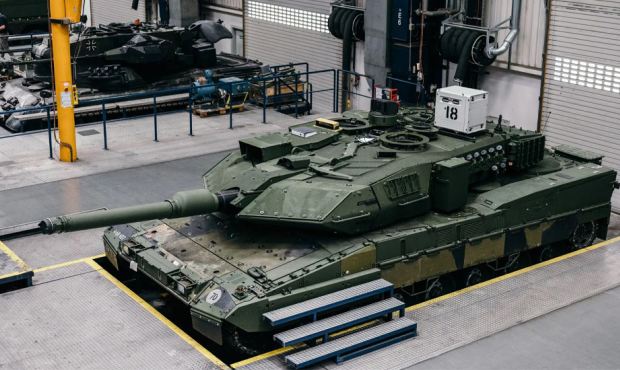Germany Confirms It Will Send Leopard Tanks to Ukraine

Chancellor Olaf Scholz announced on Wednesday that Germany would send its Leopard 2 tanks to Ukraine and allow other nations to send their own, relenting after weeks of domestic and international pressure to deliver armored vehicles aimed at helping Kyiv regain territory seized by Russia.
The move came after U.S. officials, speaking on the condition of anonymity, said that the White House would announce as early as Wednesday that it would send M1 Abrams tanks to Ukraine, appearing to assuage Mr. Scholz’s reluctance to send tanks without Washington also doing so.
The German-made Leopard 2s are widely distributed across Europe, and countries like Poland and Finland have been pushing Berlin to ship them, or at least authorize them to send their own. Poland’s defense minister said on Tuesday that his country had formally requested Germany’s permission to send Ukraine Leopard tanks from its own stocks, and other countries have indicated that they would do the same.
“This decision follows our well-known line of supporting Ukraine to the best of our ability. We are acting internationally in a closely coordinated and concerted fashion,” Mr. Scholz said in Berlin on Wednesday morning.
Ukraine’s allies have sought to strengthen its military without prompting Russia to further escalate the war, and some leaders had worried that battle tanks might cross that line. A U.S.-led meeting of allies at Ramstein Air Base in Germany last week failed to reach an agreement to provide the tanks.
But Germany did say it would begin training Ukrainians on how to use the tanks in case of a future deal, and encouraged other European nations with Leopards to do the same.
On Wednesday, the government announced that it would be sending a battalion of 14 Leopard 2 A6 tanks directly from its army stock. It said it would send another Leopard 2 battalion in a second step, but did not say when or specify whether they would come from its current stocks or directly from the industry.
Berlin will also allow the re-export of the German-made tanks owned by other countries, it said.
Germany will train Ukrainian tank crews inside the country, Mr. Scholz’s spokesman, Steffen Hebestreit, said in a statement. The package includes maintenance, repair and logistics.
The Leopard 2, first introduced in 1979, is used by 13 European armies, according to a report by the European Council on Foreign Relations, and these militaries have an estimated 2,000 vehicles.
It is one of the world’s leading battle tanks and would offer a big step forward in capability for Ukraine, which has been using Soviet-era tanks. The vehicles could be of particular value as the war enters its second year, as Ukraine looks to reclaim lost territory and expects a Russian spring offensive. Ukraine’s top military commander, Gen. Valeriy Zaluzhnyi, has said Kyiv needs some 300 Western tanks and about 600 Western armored fighting vehicles to make a difference.
The debate over the Leopards became something of a test for the German chancellor, with some German politicians and European leaders arguing that Berlin was not only missing a chance for leadership in Europe but hindering its own allies. The debate spurred a flurry of memes under the hashtag #FreetheLeopards on social media.
But Mr. Scholz had stuck to a policy of waiting to act until Germany’s partners did — in particular, Washington. That stance stems in part from Germany’s deeply ingrained post-World War II reluctance to be seen as taking a forward stance on military matters. German society has embraced a pacifist foreign policy for decades, and recent surveys show that around half of Germans are wary of sending tanks to Ukraine.
But some politicians from within Mr. Scholz’s three-way coalition have argued that Germany should take the lead in creating a consortium in which the transfer of Leopards to Ukraine would be shared across Europe, easing the burden on individual countries.
Now the question will turn to how many tanks are even available.
This month, Armin Papperger, the head of German weapon maker Rheinmetall, said his company would need a year to refurbish the 22 used Leopard 2 tanks it has in stock. Krauss-Maffei Wegmann, the builder of the tank, reportedly has some used Leopard 2 in stock, but it is unclear how many, or how long it would take to get them into fighting shape.
Germany could also send more tanks to Ukraine if the Czech Republic and Slovakia, which already gave their Soviet model tanks to Kyiv in exchange for promises to receive Leopard 2s, agreed to have their own deliveries delayed in favor of Ukraine.
Erika Solomon and Christopher F. Schuetze / The New York Times
